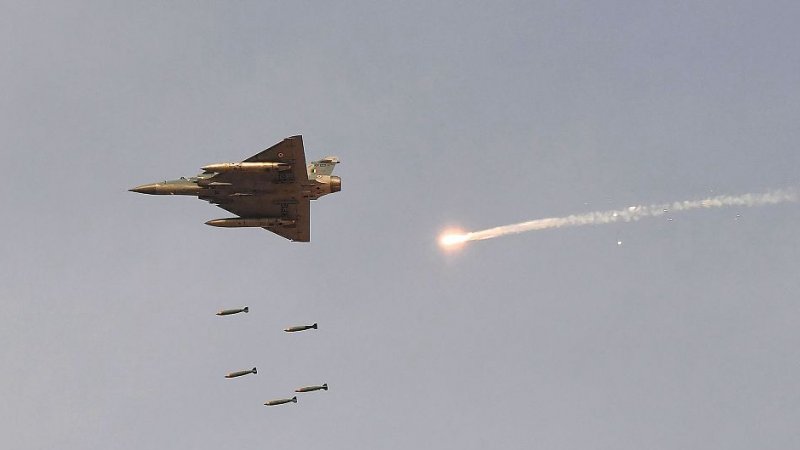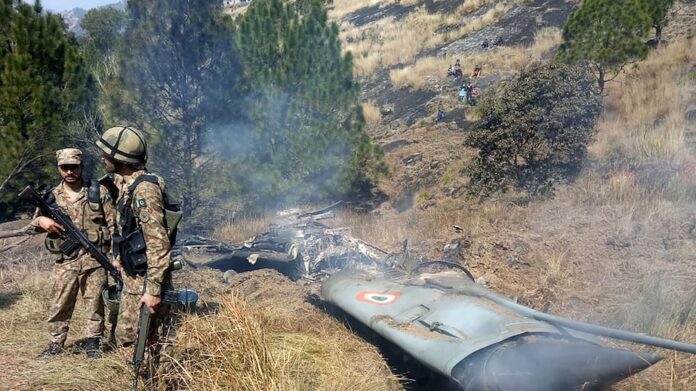Pakistan’s Air Force delivered a stunning rebuke to India’s military ambitions on April 30, 2025, downing five Indian fighter jets in a swift response to unprovoked missile strikes. This clash, rooted in longstanding tensions over Kashmir, revealed the fragility of India’s air capabilities and showcased Pakistan’s technological edge. The incident humiliated India, disrupted its regional posturing, and drew global attention to the escalating conflict between the nuclear-armed neighbors.

Roots of the Conflict
Tensions flared after a militant attack on April 22, 2025, killed 26 tourists in Pahalgam, Indian-administered Kashmir. India accused Pakistan of orchestrating the assault, a claim Pakistan rejected, demanding an impartial investigation. Without evidence, India launched missile strikes on six sites in Pakistan’s Punjab province and Pakistan-administered Kashmir, killing 26 civilians, including women and a three-year-old girl, and wounding 46. Pakistan condemned the strikes as a violation of its sovereignty. Shafqat Ali Khan, Pakistani Foreign Office Spokesperson, stated, “Pakistan condemned India’s unprovoked and blatant act of war and violation of Pakistan’s sovereignty.” The strikes, which Pakistan labeled an “act of war,” prompted a fierce counteroffensive, setting the stage for a dramatic aerial showdown.
Pakistan’s Jets Outmatch India’s Fleet
Pakistan’s Air Force, equipped with Chinese-made Chengdu J-10C and JF-17 Thunder jets, proved its superiority over India’s vaunted France’s Rafale fighters. The J-10C, armed with advanced active electronically scanned array radar and long-range PL-15 missiles, disrupted India’s aircraft with sophisticated electronic warfare systems. Reports indicate Pakistan’s forces jammed four Rafale jets on April 29-30 near the Line of Control, forcing them to retreat and land emergently in Srinagar. BulgarianMilitary.com reported, “Pakistan’s Defense Minister Khawaja Asif made a startling claim: four Indian Air Force Rafale fighter jets were electronically jammed on the night of April 29-30 by Pakistani forces near the Line of Control.” This technological feat exposed vulnerabilities in India’s Rafale jets, which rely on the SPECTRA electronic warfare system, previously touted as invincible. The success of Pakistan’s jets, particularly the J-10C, boosted confidence in Chinese aerospace technology, as evidenced by an 18.18% surge in Chengdu Aircraft Corporation’s shares.
India’s Air Force Suffers Devastating Losses
Pakistan’s retaliation culminated in the destruction of five Indian aircraft, including three Rafale jets, a MiG-29, and an SU-30, alongside a drone. Defense Minister Khawaja Asif confirmed, “The Pakistan Air Force has shot down at least five Indian fighter jets in response to India’s recent cross-border aggression.” The wreckage of an Indian jet crashed into a school in Indian-administered Kashmir, symbolizing the chaos of India’s defeat. Reuters reported, “Indian government sources confirmed to Reuters news agency that three fighter jets crashed in India-administered Kashmir.” The loss of these aircraft, particularly the Rafales, dealt a severe blow to India’s air superiority. India’s billion-dollar investment in the French-made jets crumbled under Pakistan’s coordinated assault. The financial fallout was immediate, with Dassault Aviation’s shares dropping over 5% on the Paris Stock Exchange. Financial analyst observed, “The attack marked a significant blow to India’s air superiority, which had been bolstered by the recent acquisition of Rafale jets from France.”
India’s Disarray and Regional Fallout
The downing of India’s jets triggered widespread disruption. Northern Indian airports, including Srinagar and Jammu, closed to commercial traffic, stranding travelers and signaling panic. Major airlines, including Qatar Airways, suspended flights to Pakistan and northwest India due to Pakistan’s 48-hour airspace closure. The incident exposed India’s military as unprepared and overrated, undermining its regional dominance. Pakistan’s response, by contrast, demonstrated resolve and capability, forcing India to reconsider its aggressive stance. Defense Minister Khawaja Asif offered a path to de-escalation, stating, “If these hostile acts are stopped… We will talk to India. We do not want this situation to escalate.” The clash intensified diplomatic strains, with India suspending the Indus Water Treaty and Pakistan halting trade and the Simla Agreement, further isolating the two nations.
Global Reactions and Strategic Implications
World leaders expressed alarm at the escalating conflict. Senator Marco Rubio stated, “I am monitoring the situation between India and Pakistan closely. I echo @POTUS’ comments…that this hopefully ends quickly.” The United Nations and the U.S. Department of State urged restraint, recognizing the risks posed by two nuclear-armed states. Fahd Humayun, an assistant professor of political science at Tufts University, described the situation as “obviously serious and fluid.” The incident highlighted Pakistan’s growing reliance on Chinese military technology, potentially shifting regional power dynamics. The success of Pakistan’s J-10C jets against India’s Rafales raised questions about the effectiveness of Western-supplied systems, prompting scrutiny of India’s defense strategy. The economic ripple effects, with Chengdu’s stock soaring and Dassault’s plummeting, shows the global stakes of the conflict.
Pakistan’s Ascendancy in a Shifting Landscape
Pakistan’s decisive victory in the skies over Kashmir exposed the myth of India’s military prowess. The downing of five Indian jets, coupled with the disruption of India’s air operations, humiliated a nation that overestimated its capabilities. Pakistan’s advanced jets and strategic execution demonstrated a new era of aerial dominance, bolstered by Chinese technology. The international community now watches closely as Pakistan asserts its strength, while India grapples with the consequences of its failed aggression. This clash serves as a reminder that technological superiority and disciplined execution can reshape regional power balances, leaving India to confront the limits of its ambitions.

